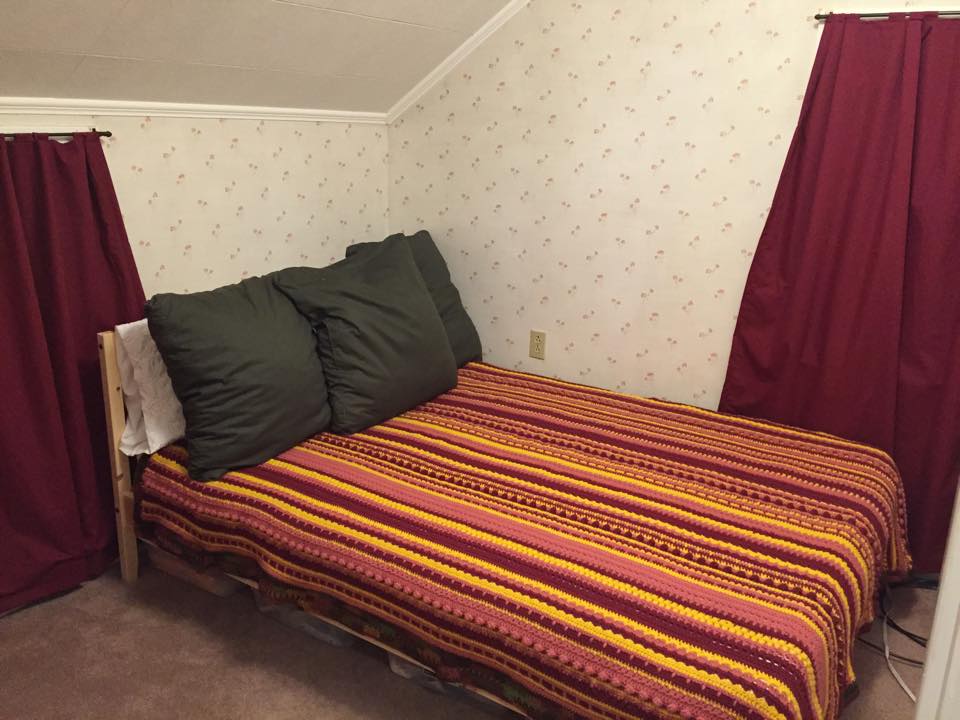So for one of my first major projects in my new home I decided to build a table. I built it out of real wood and spent about $25 dollars to do so. It's just a small round side table that I use between my two big leather chairs. However even smaller tables made out of particle board were $50 or more in retail stores, and I didn't even like any of them. So I set off to beat the retail stores and purchased what I needed to make a table of my own.
What you need:
-A Phillips head screwdriver (that fits your chosen screws well)
-Wood screws (at least 1/2 inch longer than your table top is thick)
-Wood Putty
-A table top (mine is a 27 inch diameter and an inch and a half thick, purchased at Lowes)
-2 rods (4 feet in length by one and half inches thick, purchased at A.C.Moore)
-One saw
-Sandpaper
-optional* small pieces of wood to use as supports between the legs----if you do this you will need wood glue and clamps.
This is really more straight-forward than you might imagine. You can do it!
Directions:
1. Mark on your table where each of the legs will go. This is mostly up to you because of aesthetic reasons. I aimed to have them about three inches from the edge. Make sure to space them evenly or your table wobble.
2. You also need to measure out two feet (to the middle) of your two rods. If you are lucky enough to have a power saw then use that to cut evenly throught the rod. If not I suggest marking the 2 foot line all the way around the rod before trying to cut straight with a hand saw. Set them aside
3. Where you marked the table for the four legs use the screwdriver to power the screws through to the bottom side.
4. Once you've done all four, get the rod halves. Use the screw driver to hold the screw in place while screwing the rods onto the table.
5. Set your table up on its legs to test that it is even. If it is not adjust the rods by tightening the longest ones on their screws.
6. Apply wood putty over the screws (carefully).
7. Allow it to dry for the amount of time prescribed on the bottle. Then sand it down to be smooth.
There's your table!!
If you decided to add the leg supports you need to cut them to the appropriate length (measure the distance between the legs). Bear in mind that these may not be the exact same length. Use the same marking and sawing method you used for the rod legs to cut them. Then set your table on its top. Use wood glue to position the supports and clamp them into place. I used only two and I attached them after I stained the piece so you will see them in later pictures. Using four would be a good idea for stability's sake.
After I finished the table building, I painted a design on the top.
I used acrylic paints that I already had from other previous projects.
Then finally I stained the piece in a color called Gun Stock by Minwax. I love this classic color for a very vintage look. It took two coat and I stained right over the acrylic paint except for the white parts. Finally I used a polyurethane to finish it off and give it a shined up finish!
Finished Product:
Stay tuned for more cost savvy DIY Decor projects!





